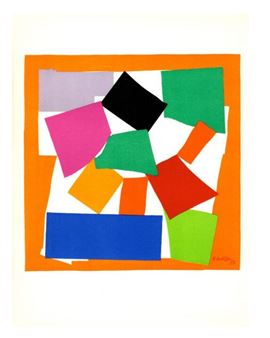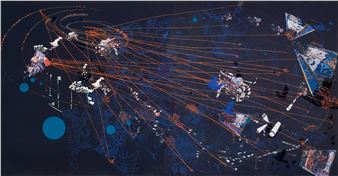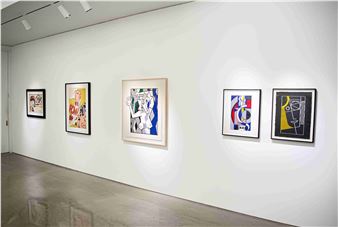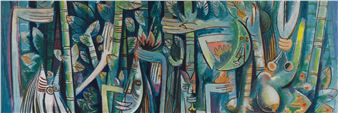Cantando Bajito: Chorus
Translated into English as โsinging softly,โ the exhibition series title is drawn from a phrase used by Dora Marรญa Tรฉllez Argรผello, a now-liberated Nicaraguan political prisoner, to describe the singing exercises she did while she was incarcerated in isolation. Helping her to conserve her voice and defeat the political terror she endured, Tรฉllezโs quiet singing became a powerful strategy for survival and resistance. Conceived in three movements, Cantando Bajito features artists who explore similar forms of creative resistance in the wake of widespread gender-based violence.
Cantando Bajito: Chorus, the third and final movement in the exhibition series is an invitation to reflect on the importance of collective making, organizing, and care arising from interdependence in shared struggles. The works illuminate how the coming together of bodies forges power out of precarity. Chorus evokes a twofold meaning: a choral bodyโan assembly of disparate voices that build togetherโand the refrain of a song, which carries both a repeating central idea, and a โhookโ that draws others in to add their voice. Chorus invites all to enter into a collective performance. This performance aims to reflect what sociologist Leticia Sabsay has called the โaesthetics of vulnerability.โ This concept shows the liberating potential of bodies that face vulnerability en masse, rallying against the all-too-present aesthetics of cruelty that seeks to divide people along gendered, sexualized, racialized, and national lines. Chorus is a call to join in a multivocal refrain of resistance transcending dividing lines. Artworks in Chorus reflect how vulnerability can act as an effective mobilizing force, and the exhibition recognizes the agency of those facing and countering systemic violence together.

Recommended for you
Translated into English as โsinging softly,โ the exhibition series title is drawn from a phrase used by Dora Marรญa Tรฉllez Argรผello, a now-liberated Nicaraguan political prisoner, to describe the singing exercises she did while she was incarcerated in isolation. Helping her to conserve her voice and defeat the political terror she endured, Tรฉllezโs quiet singing became a powerful strategy for survival and resistance. Conceived in three movements, Cantando Bajito features artists who explore similar forms of creative resistance in the wake of widespread gender-based violence.
Cantando Bajito: Chorus, the third and final movement in the exhibition series is an invitation to reflect on the importance of collective making, organizing, and care arising from interdependence in shared struggles. The works illuminate how the coming together of bodies forges power out of precarity. Chorus evokes a twofold meaning: a choral bodyโan assembly of disparate voices that build togetherโand the refrain of a song, which carries both a repeating central idea, and a โhookโ that draws others in to add their voice. Chorus invites all to enter into a collective performance. This performance aims to reflect what sociologist Leticia Sabsay has called the โaesthetics of vulnerability.โ This concept shows the liberating potential of bodies that face vulnerability en masse, rallying against the all-too-present aesthetics of cruelty that seeks to divide people along gendered, sexualized, racialized, and national lines. Chorus is a call to join in a multivocal refrain of resistance transcending dividing lines. Artworks in Chorus reflect how vulnerability can act as an effective mobilizing force, and the exhibition recognizes the agency of those facing and countering systemic violence together.
Artists on show
Contact details

Related articles
Make sure not to miss shows featuring Jenny Holzer, LaToya Ruby Frazier, Huong Dodinh, and others, plus a lot of dogs.

 ARTISTS
ARTISTS















